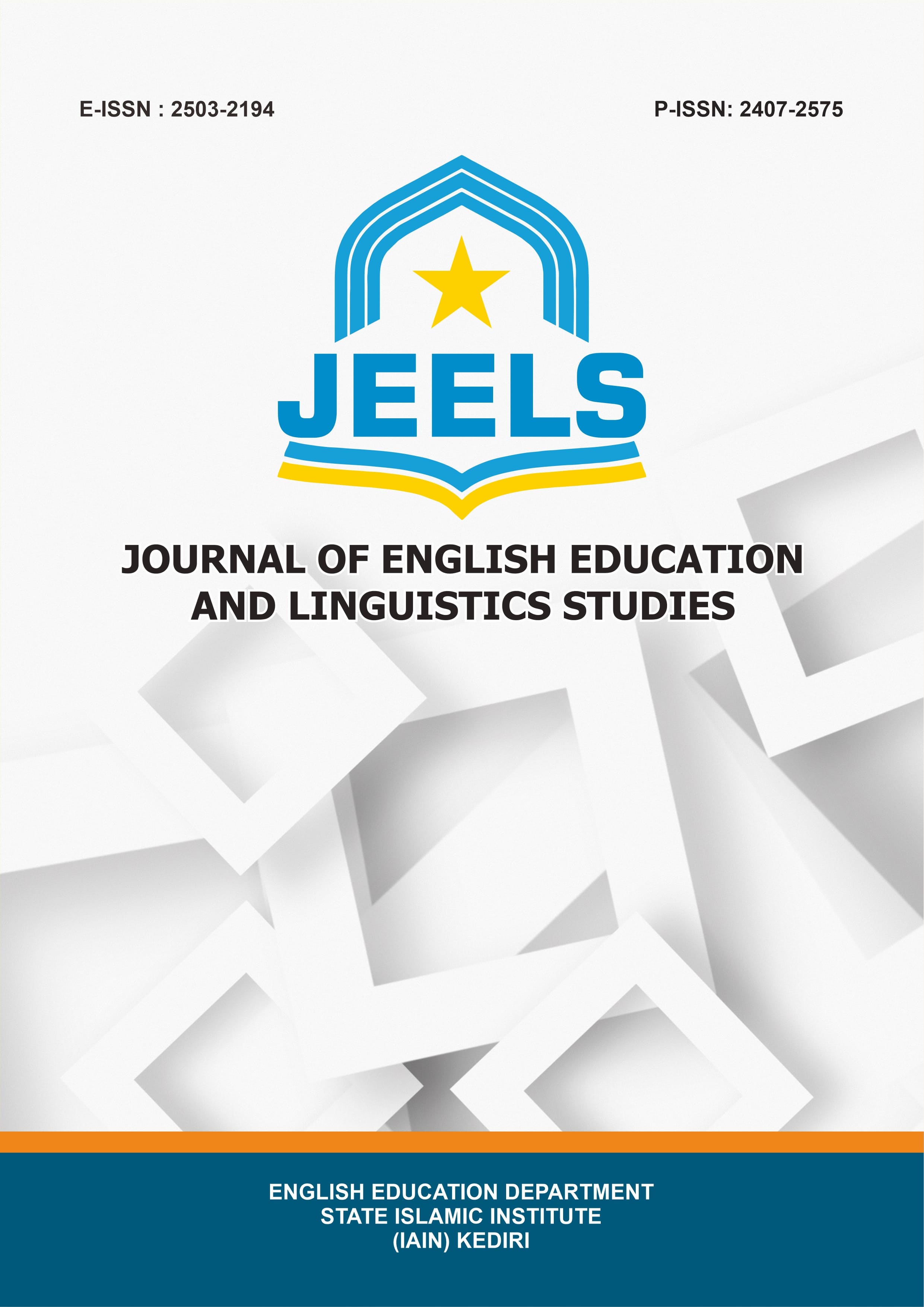Developing English Materials for Efl Learners at Islamic Junior High School
DOI:
https://doi.org/10.30762/jeels.v4i2.339Keywords:
EFL material development, material developmentAbstract
The purpose of this research was to develop an EFL course book for the first semester learners at the Islamic junior high school in Indonesia. The material development includes some procedures of need analysis, material development, expert validation, material revision, try-out and final revision. Based on the results of questionnaires distributed to 106-second graders, the interviews done to the teachers and field notes taken from a document of the syllabus, this research revealed that most of the students and English teachers require English instructional materials embracing religious and general knowledge. After validated by the experts and tried-out to the students, this research finally produced English materials that were supplemented by a teacher‟s guide, student‟s worksheets and a CD containing listening materials.
Downloads
References
Anderson, M. & Anderson, K. (1998). Text Types in English. Macmillan Education Australia.
Arimurti, D. (2007). Developing Computer Assisted Language Learning Instructional Material For The Junior High School: A Proposed Design. Unpublished Thesis. Graduate Program in English Language Education. The State University of Malang.
Borg, W R & Gall, M. D. (1979). Educational Research. New York.Longman Inc.
Brown, D.H. (2007). Teaching by Principles: An Interactive Approach to
Language Pedagogy. New York: Addison Wesley Longman, Inc.
Brown, D. H (2004). Language Assessment Principle and Classroom Practices. New York: Pearson Education, Inc.
Bouzid, H. A. (2016). Boosting 21 st Century Skills through Moroccan ELT Textbooks. Journal of English Language Teaching and Linguistics, 97-108.
Cunningsworth, A. (1995). Choosing Your Coursebook. Oxford: Heinemann.
Carey, L., Carey, J. O. (2001). The Systematic Design of Instruction. New York. Addison-Wesley Educational Publisher Inc.
Flanagan, C.C. (1981). The Instructional Media Library. New Jersey 07632: Englewood Cliff.
Grant, L. (2001). Well Said Pronunciation for Clear Communication. Boston: Heinle&Heinle, a division of Thomson Learning, Inc.
Harmer, J. (2007). How to Teach English. Cambridge: Addison Wesley Longman Ltd.
Jaya, S. (2007). Developing a Pragmatics Workbook For English Department Students Of the Muhammadiyah University of Bengkulu. Unpublished Thesis, Graduate Program in English Language Education. Malang: State University of Malang.
Kemp, J.E., Morrison, G. R., Ross M. S. (2001). Designing Effective Instruction. New York. John Wiley & Sons, Inc.
Morley, J. (1984). Listening and Language Learning In ESL: Developing Self-Study Activities for Listening Comprehension. Orlando, Florida: Harcourt Brace Jovanovich.
Polly, Y.M.E. (2009). Developing Writing Materials for the Students of the English Language Study Program of STKIP Santu Paulus Ruteng. Unpublished Thesis: Unpublished Thesis. Graduate Program in English Language Education. The State University of Malang.
Renandya, A.W., and Richards, J.C. (2002). Methodology in Language Teaching: An Anthology of Current Practice. Cambridge: Cambridge University Press.
Richards, J.C. (2001). Curriculum Development in Language Teaching. Cambridge: Cambridge University Press.
Tomlinson, B. & Masuhara, H. (2004). Developing Course Materials: RELC Portfolio series II. Singapore: SEAMEO Regional Language Center.
Ur, P (1996). A Course in Language Teaching Practice and Theory. Cambridge: Cambridge University Press.
Downloads
Published
How to Cite
Issue
Section
License
Copyright (c) 2017 JEELS (Journal of English Education and Linguistics Studies)

This work is licensed under a Creative Commons Attribution 4.0 International License.










